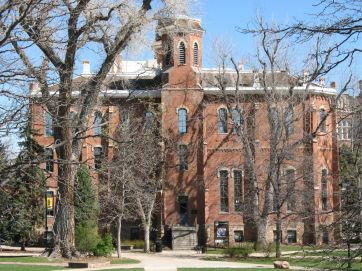Next spring, for the first time in forty years, I will not be teaching Introduction to Literature. The reason is neither budget cuts nor the sinking lifeboat of the humanities. In fact, I asked not to be assigned this class even though at my community college level, Introduction to Literature is a “plum” course. Or it was, because now the Internet has made the teaching of literature a sad and disheartening mess.
Search engines and electronic information storage have made us all empty and stupid. Memory is externalized and disembodied in the cloud; imagining is externalized in film, TV, and Google images. As a result, many students find reading uncomfortable because they have been fed images all their lives and can no longer “make pictures” in their heads. Diverted by entertainment, gaming, and social media, students no longer develop the religious, historical, or cultural knowledge essential for literary study. The “laterally associative” nature of electronic linking replaces the “vertically cumulative” richness and linearity of print. When that happens, everything that depends on the linear disappears: grammar, logic, history, narrative, and morality. Nor do students develop the necessary vocabulary from using email, Twitter, blog posts, and comment threads. These losses make literary comprehension and appreciation, much less literary interpretation, impossible. Mark Edmundson relates a story “about a Columbia University instructor who issued a two-part question at the end of his literature course. Part one: What book in the course did you most dislike? Part two: What flaws of intellect or character does that dislike point up in you?” The format and content of the Internet creates an environment seemingly designed to cause students to fail as readers, to dislike books and, consequently, to suffer from books’ demands.
First there was Google: faster, cleaner, and more copious than its predecessors and competitors. Then came Web 2.0 with Wikipedia and YouTube; each one was a body blow to the teacher of literature who now lies senseless on the academic canvass. Jane Smiley talks about how a novelist takes you along word by word, but in the electronic world, faster is better; students are impatient at any delay, even pacing. One consequence of our accelerated nervous systems is that we have all become skimmers, getting the gist, jumping to the end while glazing over sentences longer than nine words.
Happily for the numbed and impatient student, Google makes actually reading literature unnecessary. Instead of plodding through Nathaniel Hawthorne’s “Young Goodman Brown” and its “thee and thou” nineteenth century diction, students can just Google it (approximately 524,000 occurrences) and find summaries, notes, essays, quotes, analyses, interpretations, pictures, even lesson plans. The Wikipedia entry also gives students a plot summary and character analysis along with predigested comments students can offer as their own. Students who are “visual learners” can go to YouTube and find a video version of the story to watch instead of read. A popular “Young Goodman Brown” film is a high school parody mash-up of Hawthorne and Star Wars with Luke Skywalker in the role of Goodman Brown, complete with light-saber.
Lately, I also find that my lit teacher mojo has stopped working. Once I could sex up an intro class by darkening the room and running the music video of INXS’s “Devil Inside,” a modern visualizing of what is perennial about “Young Goodman Brown.” No more. Now students are already permanent residents of “cyberia,” and “oh wow” has become “ho hum.”
Worse, the Internet has turned out to be especially adept at the replication, multiplication, and distribution of error. Once, I downloaded and Xeroxed Flannery O’Connor’s “A Good Man Is Hard to Find,” (a story clearly informed by “Young Goodman Brown”). To my dismay, I discovered that the Internet is not sanguine about dialect. O’Connor’s unforgettable character The Misfit complains that “Jesus thown everything off balance.” But the Internet version had decided that what O’Connor had meant to say was “Jesus shown everything off balance,” a wrenching distortion and a corruption that would have infuriated the meticulous O’Connor. When I say that the Internet multiplies and distributes this kind of error, consider this data point: Google gives me approximately 74,000 occurrences of Shakespeare’s immortal “we are such stuff as dreams are made of . . . .” Of course, that’s 74,000 errors since Prospero actually says “we are such stuff as dreams are made on . . . .”
Nor do my most inventive essay assignments work anymore. Another of Hawthorne’s short stories is “Wakefield” (1835), the enigmatic account of a man who “under pretence of going a journey, took lodgings in the next street to his own house, and there, unheard of by his wife or friends, and without the shadow of a reason for such self-banishment, dwelt upwards of twenty years.” In 1984, Donald Hall published his poem “Mr. Wakefield on Interstate 90” in The New Republic. I used to give my students the poem after they had read short stories by Hawthorne (not “Wakefield”), Conrad, Melville, Hemingway, O’Connor, Barth, and Borges. Then I sent them to the library to burrow into books, combing stories for the source of Hall’s allusion. Then they would write a paper on the relationship between the poem and story.
Google, obviously, wrecked that assignment and spoiled the fun of the literary Easter egg hunt.
When Hall collected his poem in The Happy Man, he changed the title to “Mr. Wakeville on Interstate 90,” clouding the previous allusion. That let me surprise students with the new version and another paper having them analyze the effects of that change and his other revisions. But now any student who has done the first part of the assignment has already discovered the YouTube video of Hall reading “Mr. Wakeville” at the University of Virginia in 2007 and here at Monterey Peninsula College in 2009. Goodbye stimulating surprise.
To show the importance of a story’s end, I used to have students read a story from which I had amputated the final paragraph. After discussion, I could reveal my duplicity, hand out the real ending, and continue discussing. This was a theatrical, shocking, enlivening teaching strategy; now, searching for a clue to the story, students have already found the text online and know that the handout is incomplete.
Another assignment was to view Robert Enrico’s Academy Award film “An Occurrence at Owl Creek Bridge” (1963), then read Ambrose Bierce’s short story of the same name (1890) and write a comparison and contrast. Telling Bierce’s story with words differs radically from telling it with images, editing, lighting, acting, etc. Unfortunately, now almost 20,000 such Bierce-Enrico comparisons pop up on Google, from essaydepot.com to SparkNotes, ripe for the picking. And just last week a good student turned in a paper based on his viewing of an appalling, redubbed version of Enrico’s masterpiece on YouTube. The film’s entire soundtrack is now only Jethro Tull’s interminable “Thick as a Brick.” No birdsong and rushing water, no ticking watch, no “Livin’ Man,” just a major head fake for students who don’t know the difference.
In the end, I believe the situation I have described (massive availability of predigested opinion, the rule of images and rewired neural processing, text degradation from replicated error, and hermeneutic contamination, primarily from grade school parody) has something in common with Pandora’s Box, Humpty Dumpty, and the genie out of the bottle; it cannot be undone. Some critics will surely dismiss my conclusions as reactionary and blame either my lack of creativity or my lack of Internet savvy. They will be wrong on both counts. Pre-YouTube, I was using music videos to teach literature thirty years ago. The new medium is simply not an effective vehicle for the old medium. Thus, the situation is not limited to the teaching of literature but has implications for the creation of literature as well. Birkerts probably says it best in Reading Life (2007), “What finally is at issue is nothing less than the status, the perceived value, of imagination itself.”
Image: "TYWLS Student Working" by Globaloria Game Design // CC BY-SA













